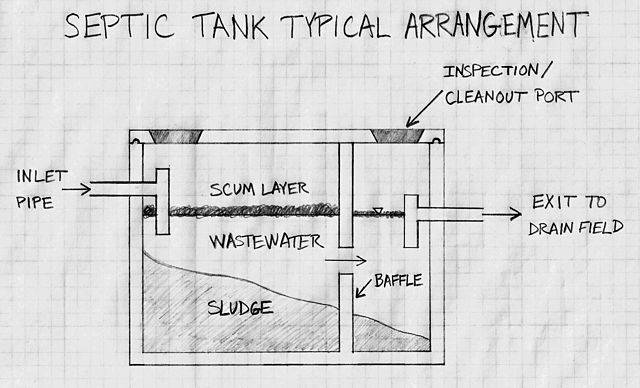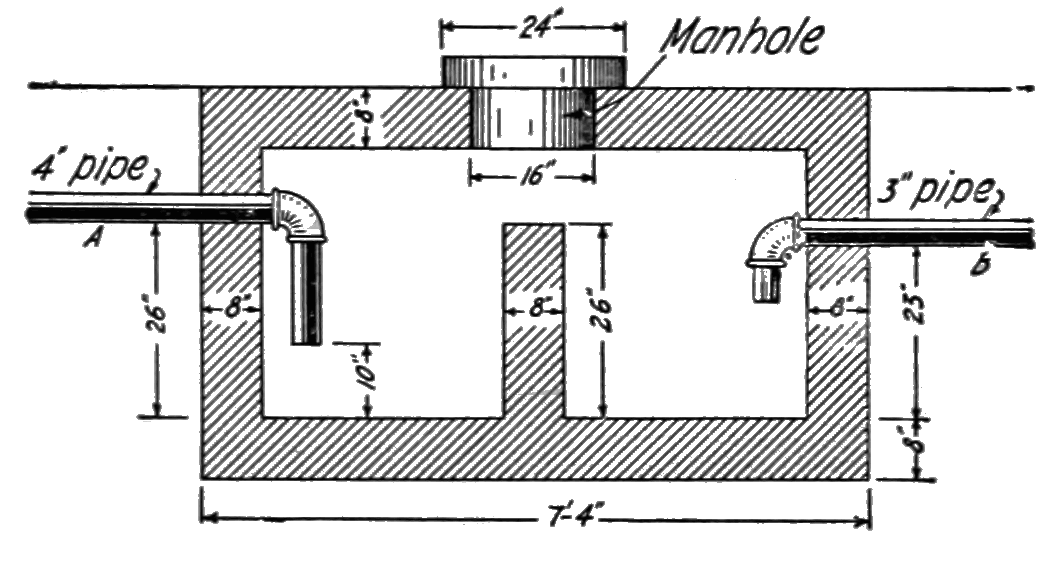Like anything else, septic tanks can fail for a variety of reasons. Maintaining your septic system will make sure it operates efficiently and lasts a long time. When it comes to taking care of your septic tank system, there are four key elements. These are not complicated and are inexpensive. Have a certified technician inspect your tank and get pumped when getting full. The average house should have their tank inspected at least every two to three years by a professional. When it comes to pumping a septic tank, a technician should have your tanks emptied every three to five years. Newer septic tank systems with electrical float switches, pumps, or mechanical components should be checked more often.
We recommend checking these devices yearly. Failure to inspect and repair broken mechanical devices in septic systems can result in a variety of issues. A service contract is beneficial since alternative systems have mechanized parts that require maintenance. Always have a professional inspect your septic tank to prevent costly repairs. There are four major factors that play a part in frequency of septic tank pumping. Your household size, total amount of wastewater generated in the house, volume of solids within wastewater, and the size of the septic tank are all key factors.
Chatta-Rooter Plumbing does an excellent job at making sure my septic system is taken care of!
When you call a service provider out, he or she will inspect your tank for leaks and examine the sludge layers in the tank. Having maintenance records on your house can help technicians out in diagnosing any potential issues. Within your tank there is a T-shaped outlet. This prevents sludge and scum from leaving the tank and traveling out into the drain field area. If the bottom of the sludge layer is roughly within six inches of the bottom, or if the top of the sludge is with 12 inches of the outlet, your tank should be pumped as soon as possible. Neglecting to pump your tank is unwise and can cause costly repairs!
hen keeping maintenance records, annotate the sludge and scum levels found by the technician. The technician should note any repairs completed as well as the condition of the tank in the report. If any major repairs required, get these completed immediately. The National Onsite Wastewater Recycling Association (NOWRA) can locate service professionals in your area to assist with any necessary repairs.
Next, it is important to use water efficiently within your house. The average indoor use in a typical single family home is roughly 70 gallons per day. A leaky toilet or sink can nearly use 200 gallons per day! If you notice any dripping faucets or continuously running toilets, address the issue immediately! Every single drain in the house travels into your septic system. Conserving water will help eliminate pumping your tanks prematurely. Conservation also helps improve operation of a septic system while reducing the risk of failures.
The EPA has a Water Sense program that has many simple and easy ways to save water. They also educate consumers on water efficient products to cut down on wasting water. On product that is advocated are high efficiency toilets. Toilets on average account for twenty five to thirty percent of household water use. Older homes will have toilets with 3.5 to 5 gallon tanks. Newer toilets are much more efficient utilizing 1.6 gallon tanks per flush. Replacing your old toilet with these high efficiency models is an easy and economical way to cut down on wastewater within your household. Another great way to cut down on excess water consumption is to utilize faucet aerators, high efficiency showerheads, and shower flow restrictors. These devices help reduce water use and the volume of water entering your septic tank system. Certain appliances in your house can waste water on a daily basis. Utilizing your washing machines improperly can lead to excess wastewater. Washing small loads of laundry when using the machines large load cycle settings will waste water and energy. Selecting proper load cycles will help cut back on wasting water. Wait until your machine is full when washing clothes. Spacing out your loads of laundry throughout the week can help your septic system. Doing all your laundry in one day can overwhelm your septic system. It may seem like a time saver doing all your laundry on one day, however, the tank will not have enough time to treat waste water, which could lead to issues with your drain field. Modern washers can be purchased with the energy star label. This uses 35 percent less energy and roughly 50 percent less water compared to older generation washers. Energy star appliances in other categories also provide significant amounts of energy and water savings on a daily basis.
Everything in your house that goes down a drain, or gets flushed down a toilet will bleed into your septic tank system. What you decide to put down the drain affects the performance and longevity of your septic tank system. It will also affect how it works. First and foremost, your toilet is not a trash can! The only things that should go in a toilet are human waste and toilet paper. Here is what should never be flushed down the toilet: cooking grease or oil, non flushable wipes, baby wipes, wet wipes, photographic solutions, feminine hygiene products, condoms, floss, diapers, cigarette butts, cat litter, pharmaceuticals, household chemicals, and paint. Putting these things in you toilet is a good way to cause serious damage to plumbing and your septic tank system.
Within your septic tank system are a collection of living organisms. These organisms digest and treat household waste. When you pour toxic chemicals down the drain, you can potentially kill the organisms that break down waste. This will in return result in damage to your tank. Here is what you should avoid doing at the kitchen sink, shower, or utility sink. Avoid chemically based drain openers for pipes that are clogged. Instead, try using boiling water in combination with a drain snake. This will prevent harsh chemical from disrupting organisms in the tank. Never pour cooking oil or grease down the drain as this can cause other debris to stick to plumbing causing clogs. One should never pour oil based paints, solvenes, or large volumes of toxic cleaners down the drain. Its ok to pour latex paint as long as its in small amounts. If you have a garbage disposal, eliminate or limit the use. Garbage disposals can reduce the amount of fats, grease, and solids that enter into the septic tank system. This will eventually clog the drainfield.
It is important to maintain your drain field. This is a component of your septic system that extracts contaminants from the liquid that exits from your septic tank. Here is how you can maintain it. Its important to never drive over or park your vehicle over the drain field so it does not crack. If you decide to plant trees, make sure they are an appropriate distance from your drainfield to prevent roots from growing into your septic tank system. Keep roof drains, sump pumps, and other drainage away from you septic drainfield area. Excess water in you drain field can slow down or sop the wastewater treatment process.





